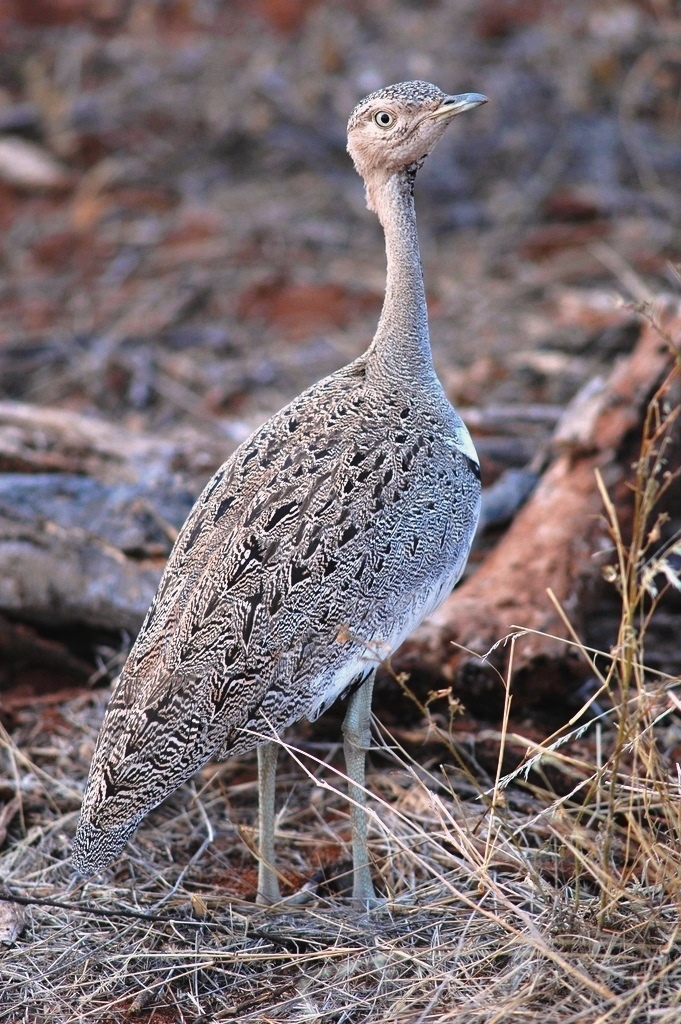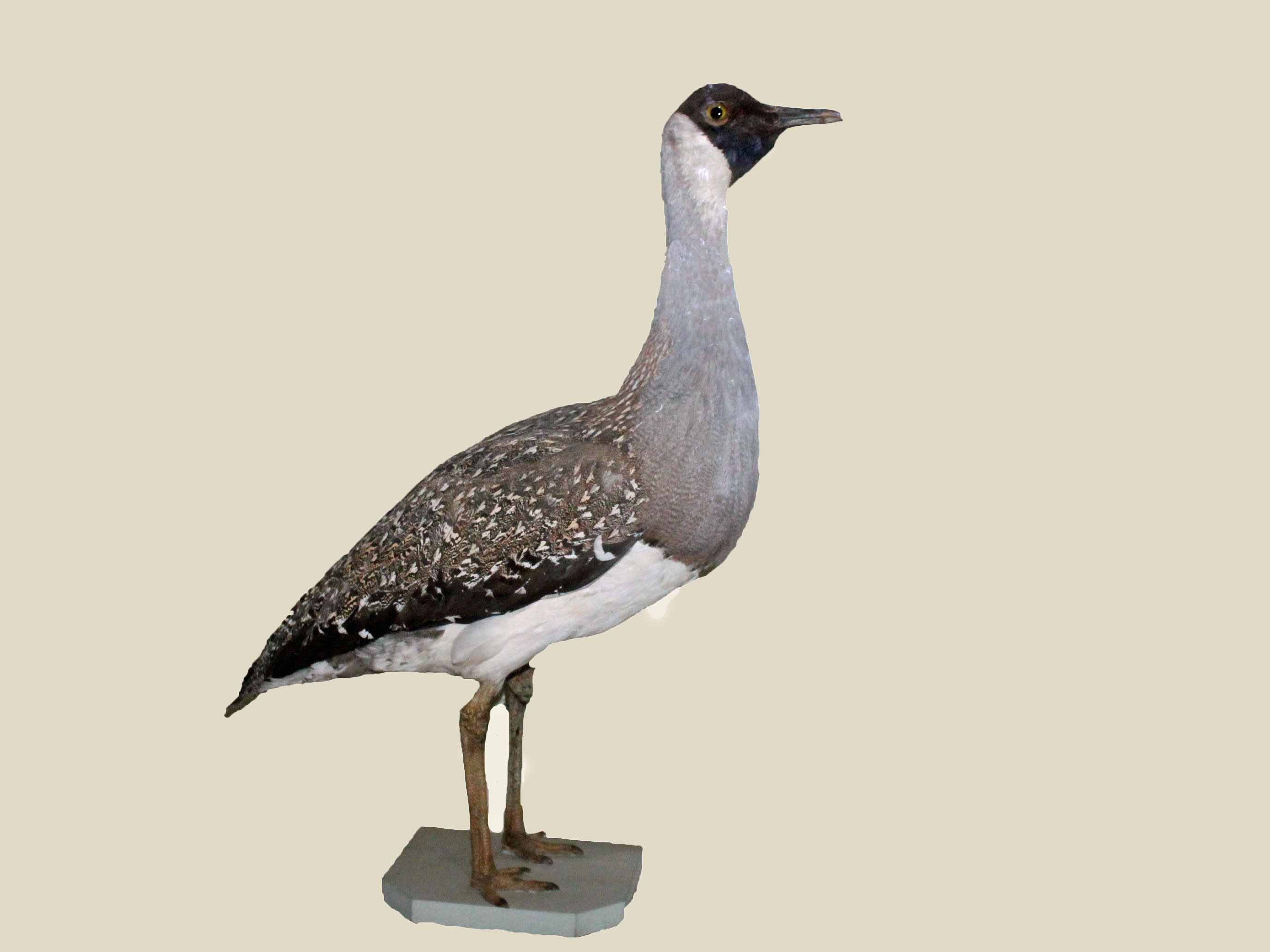|
Otididae
Bustards, including floricans and korhaans, are large, terrestrial birds living mainly in dry grassland areas and on the steppes of the Old World. They range in length from . They make up the family Otididae (, formerly known as Otidae). Bustards are omnivorous and opportunistic, eating leaves, buds, seeds, fruit, small vertebrates, and invertebrates.del Hoyo, J. Elliott, A. & Sargatal, J. (editors). (1996) ''Handbook of the Birds of the World. Volume 3: Hoatzin to Auks''. Lynx Edicions. There are 26 species currently recognised. Description Bustards are all fairly large with the two largest species, the kori bustard (''Ardeotis kori'') and the great bustard (''Otis tarda''), being frequently cited as the world's heaviest flying birds. In both the largest species, large males exceed a weight of , weigh around on average and can attain a total length of . The smallest species is the little brown bustard (''Eupodotis humilis''), which is around long and weighs around on average ... [...More Info...] [...Related Items...] OR: [Wikipedia] [Google] [Baidu] |
Chlamydotis
'' Chlamydotis '' is a genus of large birds in the bustard family. The genus name is from Ancient Greek ''khlamus'', a horseman's cloak with weights sewn into the corners, and ''otis'', bustard. Members of this genus show very little sexual dimorphism in their plumage. The clade consists of two extant species, formerly considered to be conspecific forms a sister group within the clade that includes the genus ''Otis''. The genus was established by the French naturalist René Primevère Lesson in 1839 and included only one species which was formerly described in the genus ''Otis''. The genus name of ''Houbara'' was used by Charles Lucien Bonaparte but this was dropped, being a '' nomen nudum'', as not following the requirements for zoological names. MacQueen's was split on the basis of distinctive display, differences in feather colours and on the basis of well established genetic differences. The two species are thought to have separated during a period of extreme aridity ar ... [...More Info...] [...Related Items...] OR: [Wikipedia] [Google] [Baidu] |
Otis (bird)
''Otis'' is a genus of bustard containing a single living species, the great bustard ''(Otis tarda)''. Several extinct species are known, including the recently described '' Otis hellenica'' from the Turolian of Greece Greece,, or , romanized: ', officially the Hellenic Republic, is a country in Southeast Europe. It is situated on the southern tip of the Balkans, and is located at the crossroads of Europe, Asia, and Africa. Greece shares land borders wi .... At , it was larger than its extant relative. References {{Taxonbar, from=Q4288490 Otididae Bird genera Bird genera with one living species ... [...More Info...] [...Related Items...] OR: [Wikipedia] [Google] [Baidu] |
Sypheotides
The lesser florican (''Sypheotides indicus''), also known as the likh or ''kharmore'', is the smallest in the bustard family and the only member of the genus ''Sypheotides''. It is endemic to the Indian Subcontinent where it is found in tall grasslands and is best known for the leaping breeding displays made by the males during the monsoon season. The male has a contrasting black and white breeding plumage and distinctive elongated head feathers that extend behind the neck. These bustards are found mainly in northwestern and central India during the summer but are found more widely distributed across India in winter. The species is highly endangered and has been extirpated in some parts of its range such as Pakistan. It is threatened both by hunting and habitat degradation. The only similar species is the Bengal florican (''Houbarobsis bengalensis'') which is larger and lacks the white throat, collar and elongated plumes. Description A male in breeding plumage has a black head, ... [...More Info...] [...Related Items...] OR: [Wikipedia] [Google] [Baidu] |
Eupodotis
''Eupodotis'' is a genus of bird in the bustard family Otididae. It contains the five species, all restricted to Africa. Species in the genera '' Afrotis'' and '' Lophotis'' are sometimes included in this genus; however some authorities separate the Karoo korhaan, Rüpell's Korhaan and little brown bustard as a separate genus ''Heterotetrax''. Species * White-bellied bustard (''Eupodotis senegalensis'') * Blue korhaan (''Eupodotis caerulescens'') * Karoo korhaan (''Eupodotis vigorsii'') * Rüppell's korhaan (''Eupodotis rueppellii'') * Little brown bustard The little brown bustard (''Eupodotis humilis'') is a species of bird in the family Otididae. Found in Ethiopia and Somalia, its natural habitats are subtropical or tropical dry shrubland and subtropical or tropical dry lowland grassland. As ind ... (''Eupodotis humilis'') References Bird genera Taxa named by René Lesson Taxonomy articles created by Polbot {{bird-stub ... [...More Info...] [...Related Items...] OR: [Wikipedia] [Google] [Baidu] |
Afrotis
''Afrotis'' is a genus of bustard in the family Otididae. The genus is endemic to southern Africa, and contains two species. It is sometimes included in the genus ''Eupodotis ''Eupodotis'' is a genus of bird in the bustard family Otididae. It contains the five species, all restricted to Africa. Species in the genera '' Afrotis'' and '' Lophotis'' are sometimes included in this genus; however some authorities separate ...''. Species References Taxa named by George Robert Gray {{bird-stub ... [...More Info...] [...Related Items...] OR: [Wikipedia] [Google] [Baidu] |
Lissotis
''Lissotis'' is a genus of bird in the bustard family, Otididae. Some authorities, such as the IUCN, consider it part of '' Eupodotis''; the separation adopted here follows the ''Handbook of the Birds of the World''. It contains the following species, both restricted to Africa Africa is the world's second-largest and second-most populous continent, after Asia in both cases. At about 30.3 million km2 (11.7 million square miles) including adjacent islands, it covers 6% of Earth's total surface area ...: References Taxa named by Ludwig Reichenbach {{bird-stub ... [...More Info...] [...Related Items...] OR: [Wikipedia] [Google] [Baidu] |
Great Bustard
The great bustard (''Otis tarda'') is a bird in the bustard family, the only member of the genus ''Otis''. It breeds in open grasslands and farmland from northern Morocco, South and Central Europe, to temperate Central and East Asia. European populations are mainly resident, but Asian populations migrate farther south in winter. It has been listed as Vulnerable on the IUCN Red List since 1996. Portugal and Spain now have about 60% of the world's population. It became extinct in Great Britain when the last bird was shot in 1832. Recent attempts to reintroduce it into England have met with some success and there is a population of 40 birds on Salisbury Plain, a British Army training area. Here the lack of public access allows them the freedom needed as a large ground-nesting bird. Taxonomy and etymology The genus ''Otis'' was introduced in 1758 by the Swedish naturalist Carl Linnaeus in the tenth edition of his ''Systema Naturae''. Linnaeus placed four species in the genus but ... [...More Info...] [...Related Items...] OR: [Wikipedia] [Google] [Baidu] |
Lophotis
''Lophotis'' is a genus of bustard in the family Otididae. The genus contains three species, all found in Africa. All three species are sometimes placed in the genus ''Eupodotis'', and are closely related to that genus and the genus ''Afrotis ''Afrotis'' is a genus of bustard in the family Otididae. The genus is endemic to southern Africa, and contains two species. It is sometimes included in the genus ''Eupodotis ''Eupodotis'' is a genus of bird in the bustard family Otididae. It ...''. One distinctive feature of the genus is a pink retractile crest. Species References {{Taxonbar, from=Q648781 Taxa named by Ludwig Reichenbach ... [...More Info...] [...Related Items...] OR: [Wikipedia] [Google] [Baidu] |
Kori Bustard
The kori bustard (''Ardeotis kori'') is the largest flying bird native to Africa. It is a member of the bustard family, which all belong to the order Otidiformes and are restricted in distribution to the Old World. It is one of the four species (ranging from Africa to India to Australia) in the large-bodied genus '' Ardeotis''. In fact, the male kori bustard may be the heaviest living animal capable of flight. This species, like most bustards, is a ground-dwelling bird and an opportunistic omnivore. Male kori bustards, which can be more than twice as heavy as the female, attempt to breed with as many females as possible and then take no part in the raising of the young. The nest is a shallow hollow in the earth, often disguised by nearby obstructive objects such as trees. Taxonomy English naturalist William John Burchell described the kori bustard in 1822. The specific epithet ''kori'' is derived from the Tswana name for this bird – ''Kgori''. Two subspecies are currently rec ... [...More Info...] [...Related Items...] OR: [Wikipedia] [Google] [Baidu] |
Kori Bustard
The kori bustard (''Ardeotis kori'') is the largest flying bird native to Africa. It is a member of the bustard family, which all belong to the order Otidiformes and are restricted in distribution to the Old World. It is one of the four species (ranging from Africa to India to Australia) in the large-bodied genus '' Ardeotis''. In fact, the male kori bustard may be the heaviest living animal capable of flight. This species, like most bustards, is a ground-dwelling bird and an opportunistic omnivore. Male kori bustards, which can be more than twice as heavy as the female, attempt to breed with as many females as possible and then take no part in the raising of the young. The nest is a shallow hollow in the earth, often disguised by nearby obstructive objects such as trees. Taxonomy English naturalist William John Burchell described the kori bustard in 1822. The specific epithet ''kori'' is derived from the Tswana name for this bird – ''Kgori''. Two subspecies are currently rec ... [...More Info...] [...Related Items...] OR: [Wikipedia] [Google] [Baidu] |
Ardeotis
''Ardeotis'' is a genus of birds in the family Otididae. The genus was described in 1853 by the French naturalist Emmanuel Le Maout to accommodate the Arabian bustard The Arabian bustard (''Ardeotis arabs'') is a species of bustard which is found across the Sahel region of Africa and south western Arabia. It is part of the large-bodied genus, ''Ardeotis'', and, though little known, appears to be a fairly typi .... It contains the following species: References Bird genera Taxonomy articles created by Polbot {{bird-stub ... [...More Info...] [...Related Items...] OR: [Wikipedia] [Google] [Baidu] |
Neotis
''Neotis'' is a bird genus in the family Otididae Bustards, including floricans and korhaans, are large, terrestrial birds living mainly in dry grassland areas and on the steppes of the Old World. They range in length from . They make up the family Otididae (, formerly known as Otidae). Bustard .... It contains the following species: References Bird genera Taxonomy articles created by Polbot {{bird-stub ... [...More Info...] [...Related Items...] OR: [Wikipedia] [Google] [Baidu] |

_male_(30270325416).jpg)






